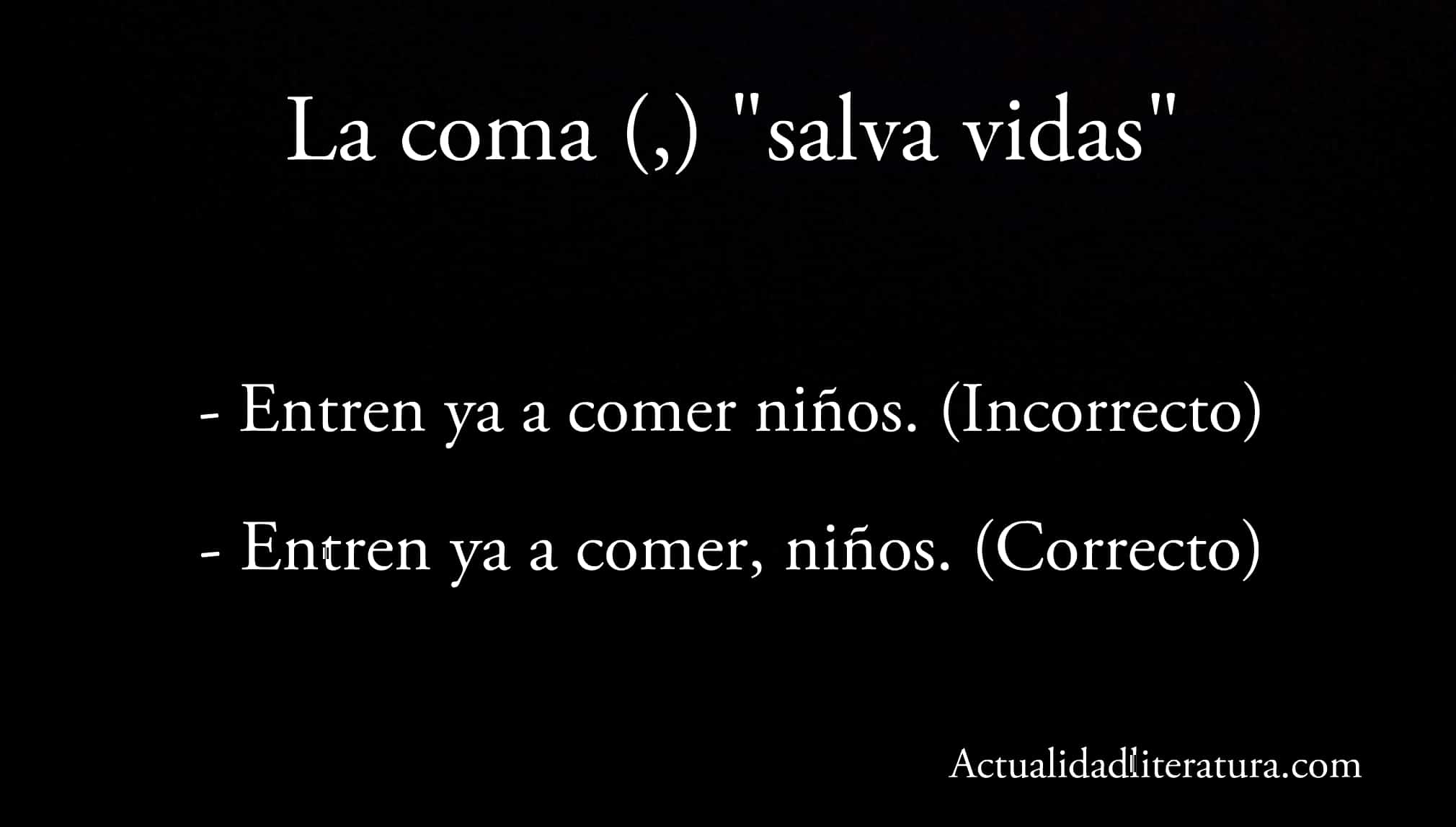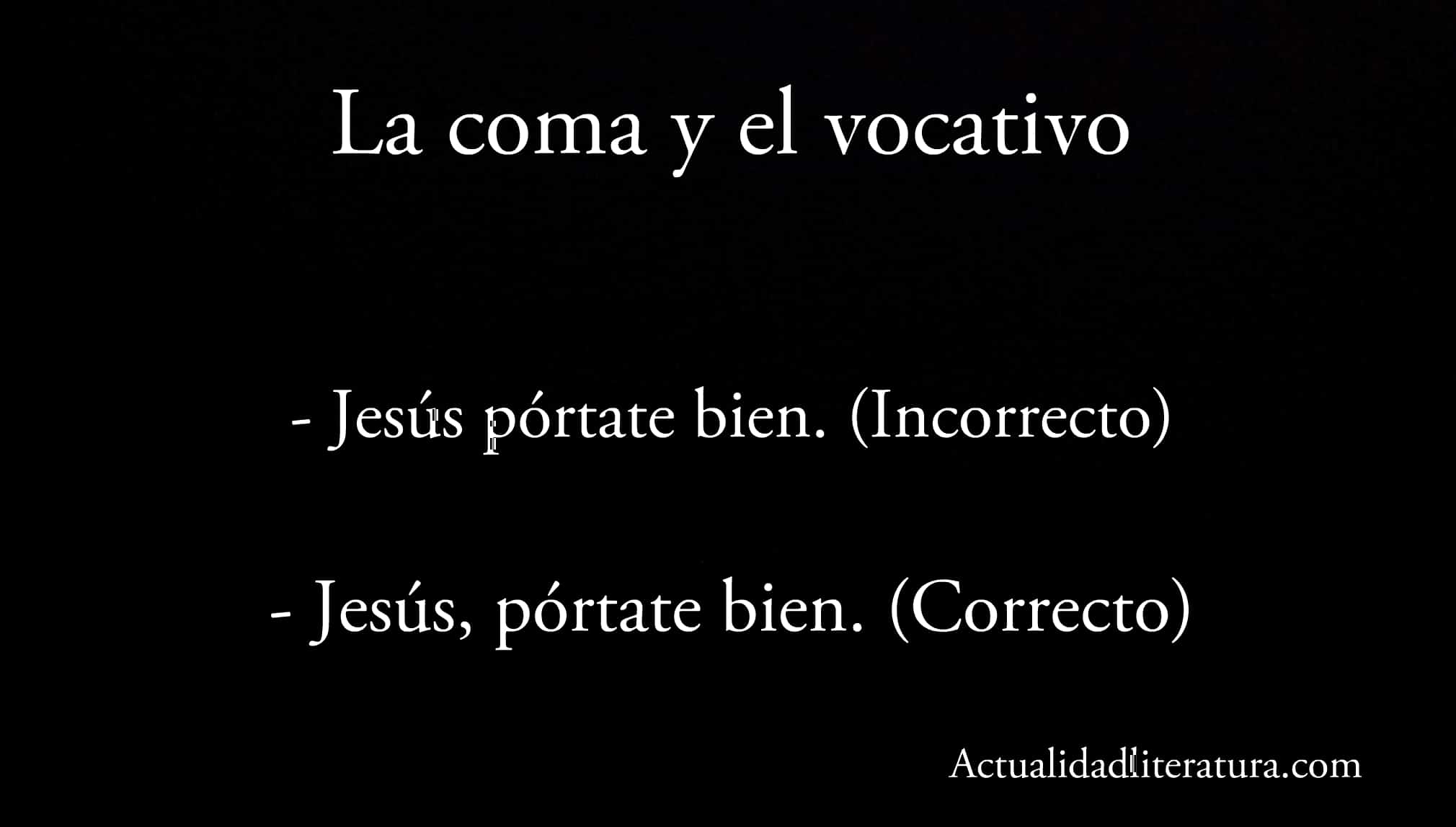
Comma saves lives
How to place the commas correctly is essential to be able to write (and read) writing properly. Without them, the reading of the texts would be totally flat and, therefore, lacking any rhythm or aesthetic sense that facilitates their understanding. The fixed rule for its use is the following: the comma must be written immediately after a previous word or sign.
Then, a space must be left between the comma and the word, sign or number that continues the content. Mainly, commas are used to indicate short pauses in writing. Those short breaks in the middle of a reading are less long than those indicated by the period (.).
Some things to consider about commas
A comma has "the power" to totally change the meaning of a sentenceeven if it shows exactly the same sequence of words. The most frequent example occurs with adjectives and the way in which you can turn a group of subjects into a whole. For example:
- Enthusiastic students completed the aerobic exercises.
- The enthusiastic students completed the aerobic exercises.
In the first line, all the students completed the aerobic exercises and all were enthusiastic. In the second statement, only those who were enthusiastic completed the exercises. Another classic example is "the life-saving comma", as seen below:
- Come in for dinner, children.
- Come in to dinner now, kids.
How to place commas correctly in text
In the two previous examples - evidently - the correct way to write the sentence is the second. (Unless it is a cruel order or a passage from a horror tale). For this reason, when a person writes a text, they must be clear about the types of commas to place them in the corresponding place with their intention.
Eat with vocative function

The comma and the vocative.
It should be remembered that the vocative is the way of pointing out or addressing one or more people by name or by some distinctive term. Then, comma used appropriately highlights the vocative of a sentence (regardless of where in the subject-verb-predicate sequence). For example: uterine
- Mario, go down to the subway station at 9 o'clock.
- High school graduates, all the sources they place must be indexed.
- It's time for lunch, Carolina, wash your hands with soap and water.
- Nilsa, the woman who loves to read to Neruda.
- Frida, so long, how you have grown!
- Dear audience, the singer has arrived, stay in your seats.
Correct use of the enumerative comma
The enumerative comma is the one used to separate each of the members of a group of elements with similar features or characteristics. This type of comma is also useful for making sequences and, usually, these words are accompanied by conjunctions (which do not have a comma before them). For example:
- Ms. Carmen sells shoes, sandals, bags, perfumes and personal hygiene products in her store. (Correct).
- Ms. Carmen sells shoes, sandals, handbags, perfumes, and personal hygiene products in her store. (Incorrect).
- Basketball, soccer, and swimming are very demanding sports. (Correct).
- Basketball, soccer, and swimming are very demanding sports. (Incorrect).
- The books by that author are exciting, dynamic, and full of surprises.
- I love going to the country because I can breathe clean air, feel the grass, hear the birds singing, and sleep without the noises of the big city.
Correct use of the explanatory or incidental comma
When the incidental comma is used, the sentence must be framed with commas at the beginning and at the end. This type of comma is used to add additional information —not essential, therefore, it can be eliminated without any problem— about the person or thing described (the subject) or the action (verb). Although, at no time can the additional data modify the meaning of the sentence.
For example:
- López, apart from being a tremendous athlete, is a very good dancer. (It can be written: López is a very good dancer).
- Mariana and Eduardo arrived, although it was cold, early at the office. (It can be written: Mariana and Eduardo arrived early at the office).
- My phone, even though it is not the latest generation, takes excellent definition photos. (It can be written: My phone takes excellent definition photos).
Correct use of the elliptical comma
The proper use of this type of comma is as a substitute for a previously mentioned verb and / or noun. For this reason, the elliptical comma is used as an ideal resource to avoid redundancy failures and prop up the writing style. For example:
- Marcos covered the morning shift and Aureliano, the night shift. (The comma after “Aureliano” replaces the segment “covered the turn”).
- Roberta bought a camera; Mario, some glasses. (The comma after "Mario" replaces "bought").
- Manuel was looking for tranquility; Ignacio, fun. (The comma after "Peter" replaces "looking for").
Correct use of appositive coma
This type of comma is used when the subject is known by another name or alias. This pseudonym must be enclosed in commas. For example:
- Giannis, the Greek phenomenon, won the NBA's Most Valuable Player award of 2020.
- Nubia, the programmer, is very efficient at eliminating leaks on the network.
- Antonio Rubiales, the writer, harshly criticized the president of the reading club.
Correct use of the conjunctive coma
The conjunctive comma is necessary when in the sentence there is a pause with some adverbial phrase or conjunctions. The proper way to place it is after the link present in the sentence. The most frequent expressions in these cases are the following:
- That is to say
- E.g.
- I mean
- First
Some examples can be seen below:
- Last week I completed the entire route, however it was very bumpy.
- Tomorrow the best bands will play, that is, a lot of people will come.
- In basketball you need to practice dribbling first.
Correct use of hyperbatic coma
In this case, the comma must be placed after an event or event. Well, the hyperbatic comma is used to modify the common order of the elements of a sentence (the sequence, subject, verb and predicate). Likewise, it serves to reaffirm an action in the midst of certain circumstances. For example: - In accordance with the values of our company, José deserves everyone's recognition.
- Despite the lack of capital, the project was carried out successfully.
- While we are behind, we must stay focused on our goal.
Other uses of the comma
As a decimal separator
In mathematics, all decimal values are preceded by a comma. Therefore, it serves to distinguish whole numbers from decimal numbers. On the other hand, in some countries the period is used for this purpose instead of the comma. (Both the comma and the period are valid for the RAE).
Examples
- 17.515,5
- 20.072.003,88
In programming languages
The comma in computing is used for various purposes. However, it is almost always used to separate values or to designate the ranges of one or more variables. In the same way, it serves to indicate the elements of a formula or command.
For example:
- [On (a, b)] (function).
- [int a, b, sum] (declaration of variables).
Excellent clarification!
It is very pleasant to find information as it is, it always helps to correct errors or writing details.
-Gustavo Woltmann.
Excellent information, thank you.